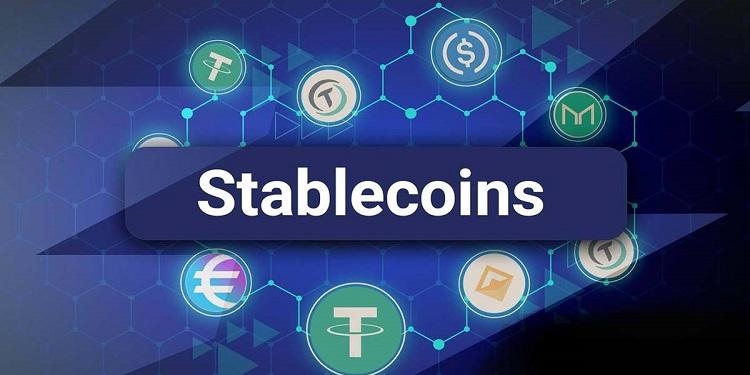
What are Stablecoins? Exploring the Future of Stable Value in Cryptocurrencies
The world of cryptocurrencies has been rapidly evolving since the advent of Bitcoin in 2009. While cryptocurrencies offer exciting opportunities for financial innovation, they are also known for their high volatility, which can deter some users from fully embracing them for everyday transactions or long-term holdings. To address this issue, stablecoins have emerged as a unique and crucial category within the cryptocurrency ecosystem. In this article, we will explore what stablecoins are, how they work, and their significance in the world of digital assets.
Understanding Stablecoins
Stablecoins are a type of cryptocurrency that is designed to maintain a stable value by being pegged to a reserve asset or a basket of assets. Unlike traditional cryptocurrencies like Bitcoin or Ethereum, which are known for their price fluctuations, stablecoins aim to provide users with a more reliable and predictable store of value. The concept of stablecoins is to combine the best features of cryptocurrencies, such as fast and low-cost transactions, with the stability of traditional fiat currencies or other assets.
Types of Stablecoins
There are several types of stablecoins, each utilizing different mechanisms to maintain their price stability. Some of the most common types include:
- Fiat-Collateralized Stablecoins: These stablecoins are backed by reserves of traditional fiat currencies, such as the US Dollar, Euro, or Japanese Yen, held in banks or custodian accounts. For every stablecoin issued, an equivalent amount of fiat currency is held as collateral, ensuring that the stablecoin's value remains pegged to the underlying asset. Examples of fiat-collateralized stablecoins include Tether (USDT), USD Coin (USDC), and TrueUSD (TUSD).
- Crypto-Collateralized Stablecoins: These stablecoins are backed by other cryptocurrencies held in a smart contract. Users deposit a certain amount of cryptocurrency as collateral, which is used to issue and support the stablecoin's value. To maintain price stability, the smart contract may automatically liquidate the collateral if its value falls below a certain threshold. DAI, issued on the MakerDAO platform, is an example of a crypto-collateralized stablecoin.
- Algorithmic Stablecoins: These stablecoins rely on algorithms and smart contracts to control their supply and demand dynamically. The algorithm adjusts the stablecoin's supply based on market conditions to keep its price stable. Algorithmic stablecoins do not require collateral and are considered more decentralized. However, they are also subject to potential algorithmic risks. Ampleforth (AMPL) is an example of an algorithmic stablecoin.
- Commodity-Collateralized Stablecoins: Some stablecoins are backed by physical commodities, such as gold or silver, which are held in reserves. These stablecoins offer the advantages of both cryptocurrencies and commodities, providing users with a stable value and potential intrinsic value. DigixDAO (DGD) and Tether Gold (XAUT) are examples of commodity-collateralized stablecoins.
Significance of Stablecoins
Stablecoins play a vital role in the cryptocurrency space and have several practical applications:
Price Stability: Stablecoins offer a more stable value compared to other cryptocurrencies, making them suitable for everyday transactions and long-term holdings. Users can use stablecoins as a store of value without worrying about drastic price fluctuations.
Efficient Transactions: Stablecoins enable fast and low-cost transactions on blockchain networks. They can be used for cross-border remittances and international payments without the need for intermediaries, resulting in faster settlement times and reduced transaction fees.
Hedging against Volatility: Traders and investors often use stablecoins as a hedge against price volatility in the cryptocurrency market. During periods of market downturns or uncertainties, users can convert their digital assets into stablecoins to preserve their value.
Decentralized Finance (DeFi) Applications: Stablecoins are a fundamental element in the rapidly growing DeFi ecosystem. They serve as a stable trading pair for various decentralized financial applications, such as decentralized exchanges, lending platforms, and yield farming protocols.
Challenges and Risks
While stablecoins offer numerous benefits, they also face challenges and risks:
Centralization Risk: Some stablecoins rely on centralized entities to hold and manage the reserve assets, which can introduce counterparty risk. Users must trust that the custodians are holding the collateral appropriately.
Regulatory Scrutiny: Stablecoins that are pegged to fiat currencies or other regulated assets may face regulatory scrutiny and compliance requirements, potentially affecting their operations and adoption.
Collateral Volatility: Crypto-collateralized stablecoins are subject to the price fluctuations of the underlying cryptocurrencies used as collateral. Sharp declines in the value of the collateral can lead to instability or under-collateralization.
Algorithmic Risks: Algorithmic stablecoins depend on complex mathematical algorithms to maintain their stability. These algorithms are susceptible to bugs, exploits, or unpredictable market conditions, posing risks to the stability of the stablecoin.
Stablecoins have become an essential part of the cryptocurrency ecosystem, offering a stable and reliable means of transacting and storing value in the digital age. With their practical use cases and potential for financial inclusion, stablecoins have garnered significant attention and adoption from individuals, businesses, and financial institutions worldwide. However, it is crucial to address the challenges and risks associated with stablecoins and develop robust and transparent models to ensure their long-term sustainability and contribution to the advancement of the global financial landscape. As the technology evolves, stablecoins will continue to play a pivotal role in shaping the future of cryptocurrencies and revolutionizing the way we conduct financial transactions.


